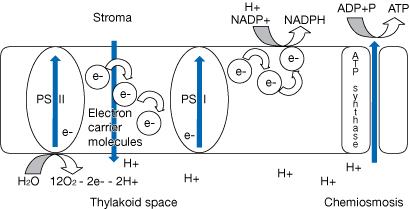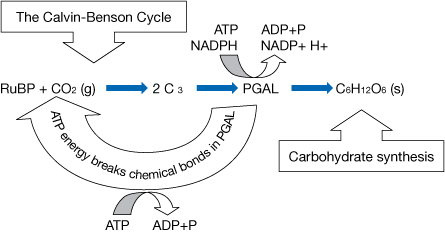Module 5 Intro
1. Module 5 Intro
1.20. Page 2
Module 5—Photosynthesis and Cellular Respiration
 Explore
Explore
 Read
Read
You have already investigated factors affecting photosynthesis in Module 1: Lesson 1 of Biology 20. At the beginning of this course, you used a virtual lab to study photosynthesis under a variety of conditions. Your assignment asked you to make conclusions about the effect of light intensity, carbon dioxide, temperature, and light wavelength on the production of oxygen. You may want to review your Lesson 1 Assignment and the Photosynthesis Gizmo.
In Module 1 you also looked at biogeochemical cycles. Photosynthesis is critical in the cycling of oxygen and carbon dioxide. You now have a better idea of how oxygen and carbon are cycled by light-dependent and light-independent reactions.
The following two diagrams from Lessons 2 and 3 of Module 5 review the stages of photosynthesis.


By looking at the process of photosynthesis as a series of reactions, you can now see exactly where the factors affecting photosynthesis have their effect. Answer the following Self-Check questions.
 Self-Check
Self-Check
SC 1. Complete this Self-Check activity.